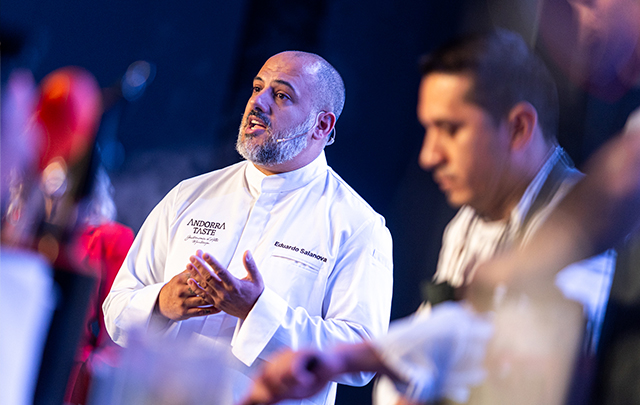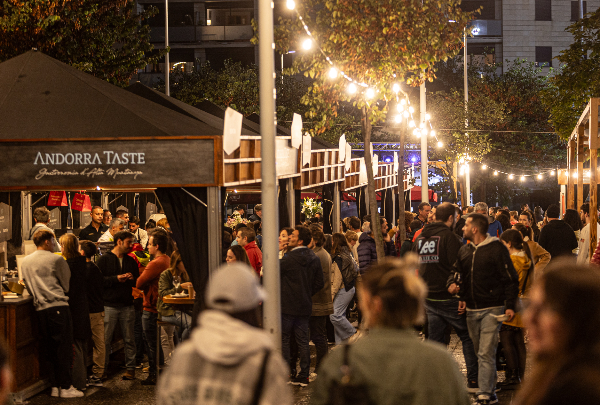News
A love of Aragon's heritage and its historic trans-Pyrenean cuisine

Eduardo Salanova returned to his hometown of Canfranc with a Michelin star and turned the old railway station into a gastronomic landmark where the history, culture and flavours of the region come together in a railway carriage.
After a few years of training outside Huesca in prestigious kitchens such as Echaurren and Aponiente, Eduardo returned to his homeland to open Espacio N, an Aragonese haute cuisine restaurant in the town of Esquedas, which earned him his first Michelin star. A recognition he gave up to accept the Barceló Group's proposal to turn the recently inaugurated Royal Hideaway Hotel into a gastronomic reference point in the area.
Located in the colossal building of the old Canfranc international railway station, it was a very personal project for the chef, as romantic as it was ambitious: 'to bring a legendary building back from the brink of ruin, to enhance the heritage of the area and, with emotion and responsibility, to create a benchmark of calm and quiet luxury'.
Thus, in mid-2021, he opened the doors of the Canfranc Express restaurant, located in a 1927 railway carriage at an altitude of more than 1,200 metres, and in just five months he achieved his second star, with a cuisine based on recipes from the Aragonese valleys and with great references such as the writer Teodoro Bardají. In fact, his presentation at Andorra Taste was entitled "Historic Trans-Pyrenean Cuisine", "because it is our identity, the result of the work I have been doing for the last 10 years, reinterpreting the historic recipes of my region". To prove his point, he brought along four of the most outstanding dishes from his Cambio de Vía menu, which aims to reposition the culinary heritage of the Canfranc valley using contemporary techniques.
The sea flavours of his childhood
He began the showcooking with an original "oyster and sturgeon binomial", inspired by the Scandinavian technique of salmon gravlax, "but curing the sturgeon by applying two layers of a puree of Empeltre olives and black garlic from Lower Aragon for 7 days and then smoking it for 3 hours with vine shoot smoke". To serve, on a base of black garlic powder, he has placed two thin fillets of sturgeon separated by black olive breadcrumbs, to finish with an oyster gazpachuelo with grains of caviar and glacial ficoid. A taste of the sea that he also achieved with his second dish, a seafood borage, the fruit of his childhood memories, "because when I was a child I could only eat borage with clams or anglerfish". Today's dish was composed of barnacles, cubes of tofu made with horseradish and lemon zest blanched three times, newborn borage sprouts "with a pronounced oyster flavour" and borage flowers bathed in a Normandy sauce made with borage leaves and molluscs.
For the main course, he chose Agnei Ibérico lamb, 'because at Canfranc Express we always end with lamb or veal as a tribute to our land', matured on seaweed for 5 days and cooked the French way, marinated in seaweed butter and then baked in the oven without overcooking it. He has placed it on a lamb neck broth sauce "soaked in the juice of the seaweed in which the lamb has matured, reduced in the oven for 5 hours at 150°C and left to rest overnight to obtain the desired mixture of sea and mountain", finished with a parmentier of potatoes, lemon and nori seaweed and crowned with salicornia sautéed in butter. Finally, he has chosen an interpretation of the traditional Russian cake from Huesca, 'inspired by the aquafaba technique, which uses the water from cooking pulses to replace the egg white'. This is why, in his case, the local white bean, "known as boliche and almost extinct", was the star of a delicious dessert with which he awakened the taste buds of those present just before the meal.
























